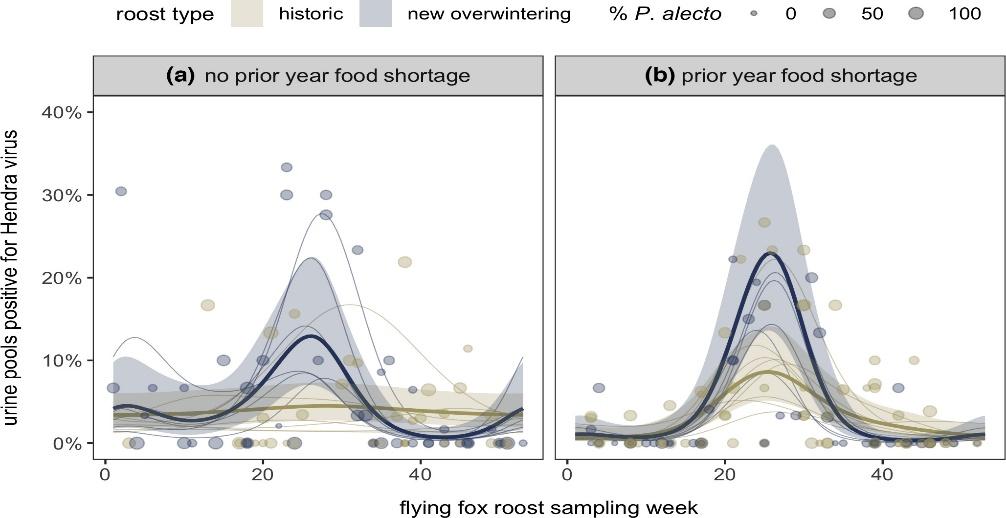Disease summary
- Agent type: A virus that infects flying foxes, which are giant fruit bats.
- Signs and symptoms: Once infested and after an incubation period between 9 and 16 days, patients experience a respiratory infection with severe flu-like symptoms, drowsiness, headaches, and fever. In specific cases, the illness might progress to encephalitis.
- Animal reservoirs: Horses become infected after being exposed to flying foxes’ urine-infected virus. Transmission to humans occurs once people are exposed to an infected horse’s body fluids, excretions, and tissues.
- Morbidity and mortality: Fatality cases are high once infected, although the infection rate is rare.
- Risk factors: It can infect anyone that comes in contact with an infected horse’s body fluids, excretions, and tissues.
Climate and Hendra Virus
Land clearing in giant fruit bats’ habitats has exacerbated food shortages due to climate change, which has led to increased Hendra virus spillovers to horses.
Observed climate change influence on Hendra virus
A study by Yuen et al. (2020) has shown that Hendra virus cases have been linked to an increased likelihood of expanding inland and southern Australia due to climate change. Climate change has led to an increased lack of food resources due to tree clearance dispersing flying horses outside their typical territories. Further, according to Becker et al. (2022), the viral excretion winter pulse of flying fox roosts is most pronounced after food shortages and when bats are dispersed from their natural habitats. The case is best illustrated in the graph below.

Possible future effects of climate
As climate change continues to impact natural resources, the risk of Hendra virus infection increases due to cumulative pathogen excretion from bats. With bats relocating their habitats, there will be an increase in spillover frequency, which provides a new approach to more spillover and infection risk.
References
Becker D. J. Eby P. Madden W. Peel A. J. & Plowright R. K. (2022). Ecological conditions predict the intensity of Hendra virus excretion over space and time from bat reservoir hosts. Ecology Letters Oct2022 P1 1.
Yuen K. Y. Fraser N. S. Henning J. Halpin K. Gibson J. S. Betzien L. & Stewart A. J. (2020). Hendra virus: epidemiology dynamics about climate change diagnostic tests and control measures. One Health. Web.